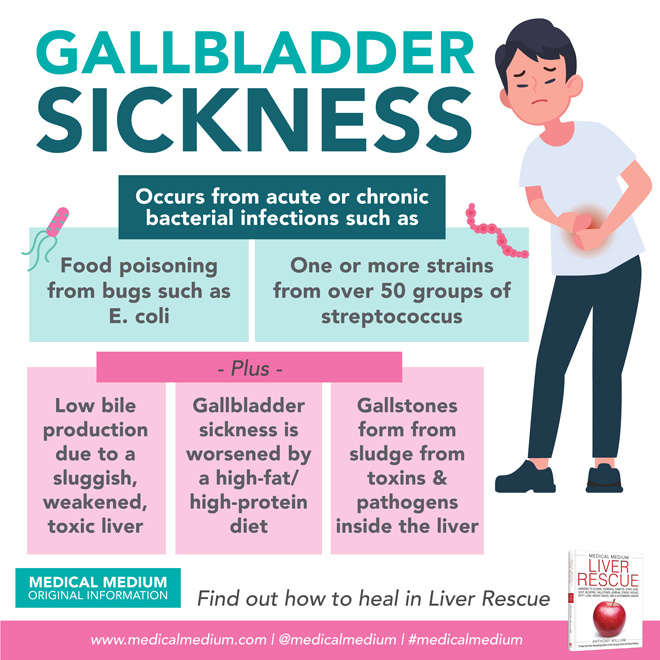
Acute or chronic, long-term bacterial infections inside the gallbladder usually occur from food-borne bacteria from contaminated foods or food poisoning or one or more strains from the over 50 groups of Streptococcus bacteria. Strep can enter the gallbladder and, over time, weaken its lining, creating scar tissue. In time, the strep finds its opportunity for a gallbladder infection, causing it to become mysteriously inflamed.
There is also sludge that can be in the gallbladder that contains hundreds of preservatives and thousands of toxic chemicals at the most minute level that we get from contaminated air, water, and food. The sludge gets into crevices in the gallbladder’s lining, and because bile is weakened, chronic infection can occur and create mysterious spasms that bring on periodic pain.
Sludge that has built up over the years from toxins, pathogens, and pathogenic byproduct inside the liver can eventually form into stones inside the gallbladder. When the liver is working well, bile prevents gallstones. One of bile’s jobs when it’s strong is to disperse bilirubin, watering it down. As the liver sends bile into the gallbladder, it disperses red blood cell pigments so they won’t clot problematically. It does the same with cholesterol, thinning it in the gallbladder to prevent cholesterol stones. Strong bile also means less heating of the liver, which translates to less need for the gallbladder to cool, which creates fewer gallstones. A liver that gets overloaded, however, leads to weakened bile production. The undiscovered chemical compound that the liver produces for the bile to help thin out and disperse red blood cells and cholesterol also diminishes.
When the gallbladder is filled with stones and sludge, its placement can actually shift from the heavy weight. It rests in an area of hypersensitive nerves around the liver and colon, so when it moves, it can put pressure on the gallbladder’s neck and surrounding nerves, any of which can trigger gallbladder spasms or random pains.
Gallbladder sickness is worsened when consuming a high-fat/ high-protein diet.
Find out more in the NYT best-selling book, Liver Rescue.
This item posted: 09-Sep-2022
The information provided on this Site is for general informational purposes only, to include blog postings and any linked material. The information is not intended to be a substitute for professional health or medical advice or treatment, nor should it be relied upon for the diagnosis, prevention, or treatment of any health consideration. Consult with a licensed health care practitioner before altering or discontinuing any medications, treatment or care, or starting any diet, exercise or supplementation program. Neither Anthony William nor Anthony William, Inc. (AWI) is a licensed medical doctor or other formally licensed health care practitioner or provider. The content of this blog and any linked material does not necessarily reflect the opinions of Anthony William, AWI or the principal author, and is not guaranteed to be correct, complete, or up to date.
Thanks for printing this post. For more, visit nwwbettn.top